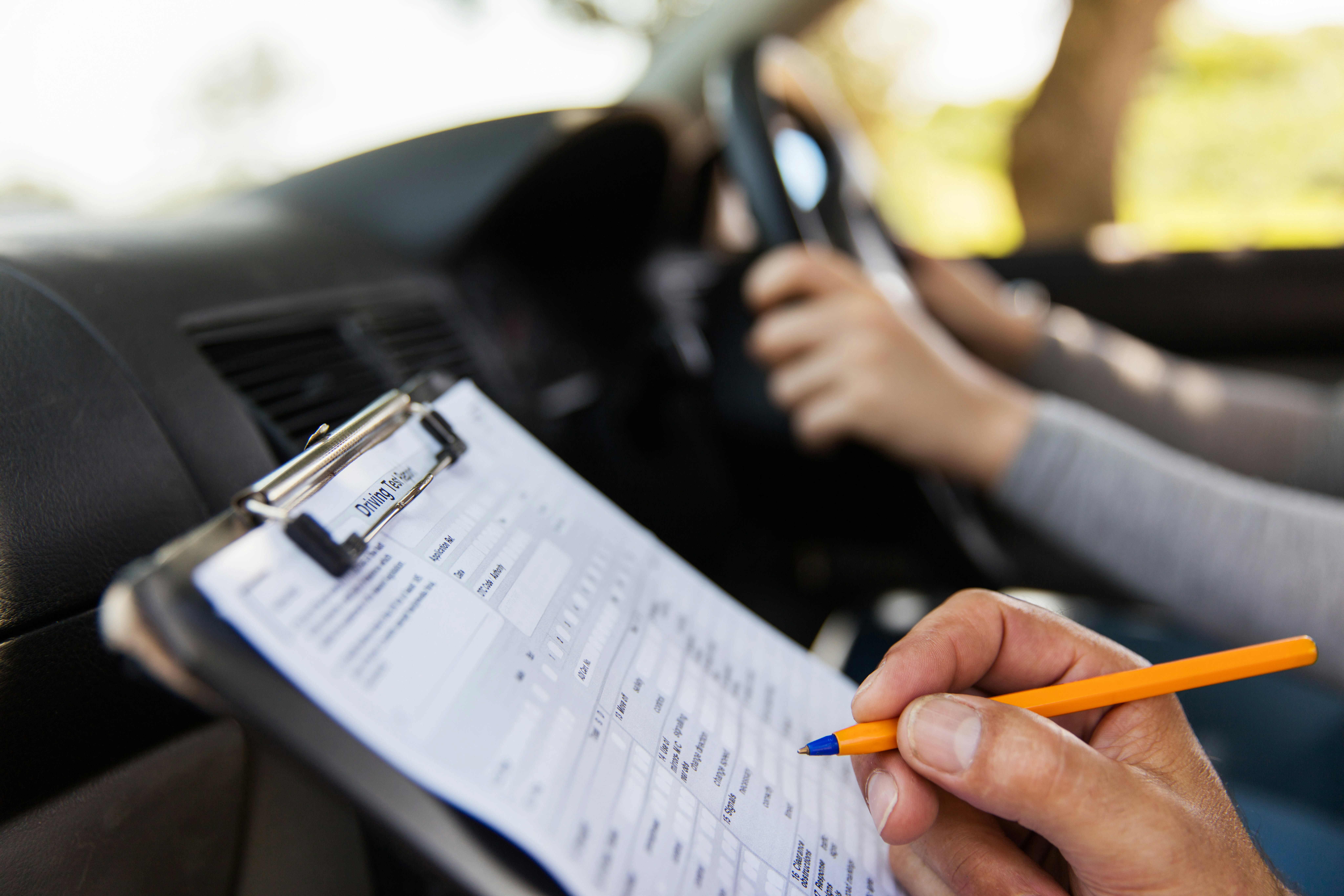A guide to the ADI test parts one and two
If you want to teach others to drive, then you must be an approved driving instructor (ADI). To do this, you must check you’re eligibility at GOV.UK and then pass the three-part ADI test.
We look at what’s involved in parts one and two and what insurance you’ll need for the practical test.
By Alan Boswell Group

In this article
What is the ADI test part one?
ADI test one is a theory test similar to the one taken by learner drivers. It currently costs £81 and you’ll need to pass it before progressing onto parts two and three.
You can book your test online at GOV.UK, book your instructor theory test. Remember to have your UK driving licence number and your reference number from the DVSA to hand. You’ll also need an email address and a credit or debit card.
What does the ADI test part one involve?
ADI part one consists of 100 multiple-choice questions and a hazard perception test, which you have 90 minutes to complete.
The multiple-choice section tests your knowledge of these four categories:
Road procedure.
Traffic signs and signals, car control, pedestrians and mechanical knowledge.
Driving test, disabilities and the law.
Publications and instructional techniques.
The hazard perception test includes 14 video clips, 13 of which have one hazard and one clip has two hazards. Similar to the learner driver version, you’re looking for ‘developing’ hazards, and you get more points the earlier you spot the danger (up to a maximum of five points per hazard). You get one attempt at each video clip.
How long is the part one exam?
You’ll have an hour and a half to complete the part one test (the hazard perception section normally takes around 20 minutes). You’ll also get an extra 15 minutes before the test starts so you can get used to the system.
What’s the pass rate for ADI part one?
You’ll get your test results at the centre after completing the test. To pass the multiple-choice part, you’ll need an overall score of 85 out of 100 and get at least 20 out of 25 for each section. So, if you got 18 out of 25 in one section but got more than 85/100 in total, you will have failed the test.
The hazard-perception test is out of 75 (up to five points per hazard). To pass, you’ll need at least 57 out of 75.
If you fail, the test centre will give you a letter explaining which categories you failed. You must wait at least three working days before retaking the test.
What is the ADI test part two?
The ADI part two test is the practical element. You can only take it when you’ve passed part one. The test assesses your driving ability and practical knowledge of the Highway Code.
To take the test, you’ll need your UK driving licence and a suitable car. The test currently costs £111.
What does the ADI part two test involve?
The part two test is similar to the learner driver practical test (although expectations are much higher). The test takes around one hour and has five elements:
An eyesight check where you must be able to read a new-style number plate from 27 metres (or an old-style plate from 27.5 metres). If you can’t do this, you’ll fail the part two test.
Five ‘show me, tell me’ questions about car safety (you’ll be asked three questions before you start driving and two as you’re driving). You’ll get a serious fault if you answer all five questions incorrectly or lose control of the car when answering.
General driving ability to demonstrate you can:
control the car
use the right road procedure
anticipate other road users and act appropriately
use sound judgement when it comes to distance, speed and timing
be considerate of the safety and convenience of other road users
drive in a way that is environmentally friendly
Reversing your car where you’ll be asked to carry out two of the following:
parallel park at the side of the road
reverse into a parking bay and out again
drive into a parking bay and reverse out
pull-up on the right-hand side of the road, reverse and rejoin traffic
A 20-minute independent driving element following a sat nav or road signs (you won’t be penalised for taking wrong turns unless you make driving faults while doing so).
How long does the ADI test part two take?
The part two test takes one hour to complete.
What is the pass mark for the ADI test part two?
When you take the practical test, there are three types of fault:
Dangerous fault – these can potentially put you, the examiner and other road users in danger. This also includes danger to property.
Serious fault – something that could become a dangerous fault.
Driving fault – these are not serious or dangerous on their own, but if you keep making the same mistake, it has the potential to become serious.
You’ll pass the test as long as you don’t make:
more than six driving faults
any serious or dangerous faults
You’ll be told whether you’ve passed or failed at the end of the test and the examiner will tell you what (if any) faults you made and give you a copy of the driving test report.
What insurance cover do I need for the ADI test part two?
It’s important to check your car insurance policy covers you for taking the ADI part two test. If you’re not sure, ask your insurer.
If your policy doesn’t cover you for taking the test, any policy you have can be voided, and any claims will be declined.
If you’re caught without suitable car insurance, not only do you risk invalidating your policy, but you can also be fined and given penalty points. This could affect your eligibility to become a driving instructor (you cannot have more than six penalty points on your licence).
Can I use my own car for ADI part two?
Yes. You can use your own car for the ADI part two test, but it must meet certain rules. As well as being roadworthy, taxed and insured, it must:
not have any warning lights showing (for example, oil or airbag warning lights)
meet the legal requirement for tread depth and not have any tyre damage, your spare tyre should not be a space-saver type either
be fitted with an extra inside rear-view mirror for the examiner
be fitted with a passenger seatbelt and head restraint (not a slip-on)
be able to reach at least 62mph and have a mph speedometer
meet the maximum authorised mass (MAM) limit
It’s worth bearing in mind that there are certain cars you aren’t allowed to use as they don’t give the examiner an all-round view. These include:
BMW 218 convertible
BMW Mini convertible
Ford KA convertible
Smart Fortwo 2-door
Toyota iQ
VW Beetle convertible
Ideally, you should check with the test centre beforehand as other cars may not be considered suitable. If you arrive for the test in an unsuitable car, the test will be cancelled, and you’ll have to pay for it again.
What happens after I pass the ADI part two test?
If you pass part two, you can book ADI test part three (which tests your teaching ability).
You can also apply for your trainee driving instructor licence (trainee driving instructors are also known as potential driving instructors, PDIs). Don’t forget to arrange driving instructor insurance if you don’t already have it.
What happens if I fail the ADI part two test?
If you fail the test, the examiner will take you through your faults.
If you failed the part two test once, you have two more chances to take it (you’ll need to pay for it each time).
If you fail the part two test on the third attempt, you’ll need to resit the ADI test part one again. You can only do this if two years have elapsed since you first passed the part one test.
Can I appeal the decision?
If you disagree with the examiner’s decision, you can appeal (check if you’ve grounds to do so at GOV.UK).
Bear in mind that even if the DVSA (Driver and Vehicle Standards Agency) agrees with your decision, your test result cannot be changed. You may be given a refund or given a free test instead.
If the DVSA doesn’t agree with your appeal, you can take the case to court. Again, even if the court sides with you, your test result cannot be changed.
Arranging PDI and ADI insurance
If you apply for a trainee driving instructor licence after passing ADI part two, you can start teaching learners to build up experience for ADI part three.
In terms of cover, there’s little difference between ADI and PDI insurance. Policies for PDIs are often more expensive simply because you’re not yet fully qualified, and the risk is considered greater.
Most ADI and PDI insurance include any driver cover and cover for examiners, as well as legal protection.
At Alan Boswell Group, we tailor our policies so if, for example, you offer trailer driving instruction, we can make sure you’re covered. Similarly, if you provide lessons to previously convicted or banned drivers, we can also help you with insurance for that, too.
Need help with your insurance?
For advice and guidance on PDI and ADI insurance, you can speak to a member of our team, who’ll talk you through what you need and the available options.
Make an enquiry
Related guides and insights

The difference between an ADI and a PDI
We look at the differences between being an ADI and a PDI, how it affects the lessons you can give, and what type of driving instructor insurance you need.

What does PDI insurance cover?
Teaching other people how to drive is a huge responsibility, but having the right insurance can give you peace of mind and lower your financial risk. Here’s what PDI insurance covers and how much it costs.

Do driving instructors need special insurance?
Driving instructor insurance is a specialist policy made up of several different types of insurance products, giving you protection for a range of events and scenarios. Here’s what to consider.
